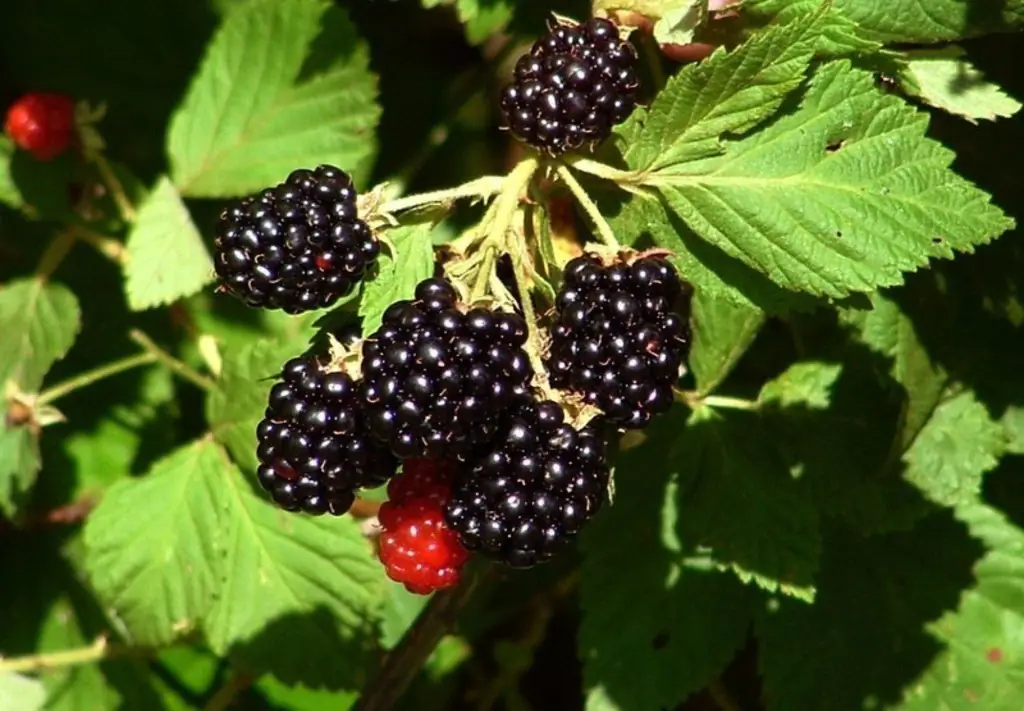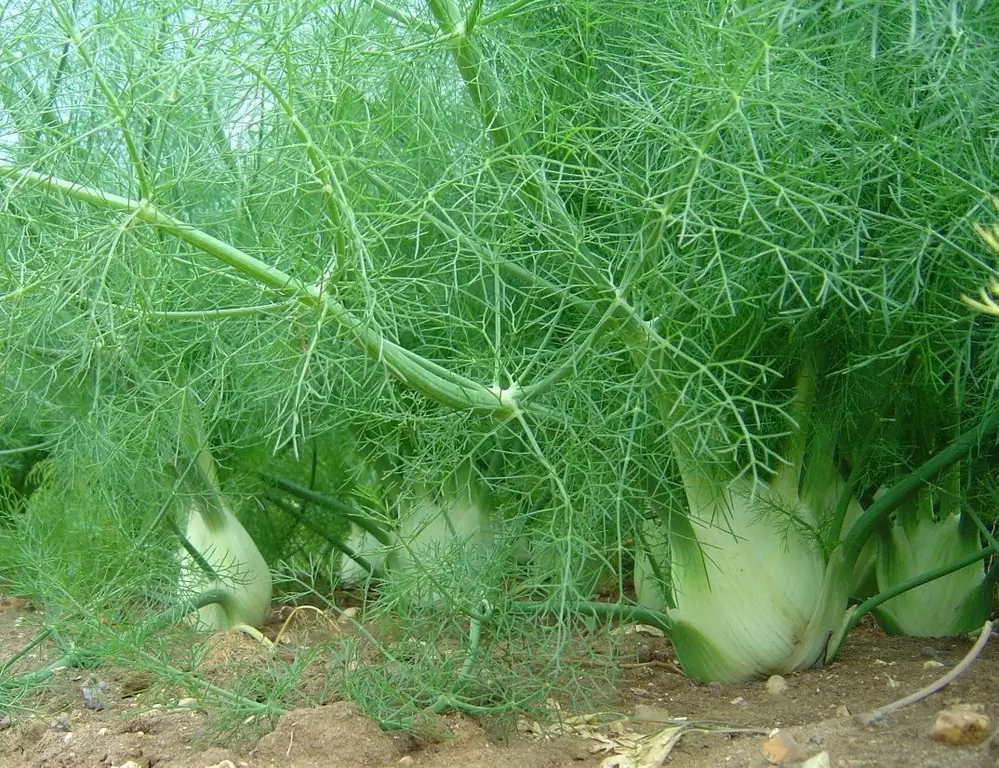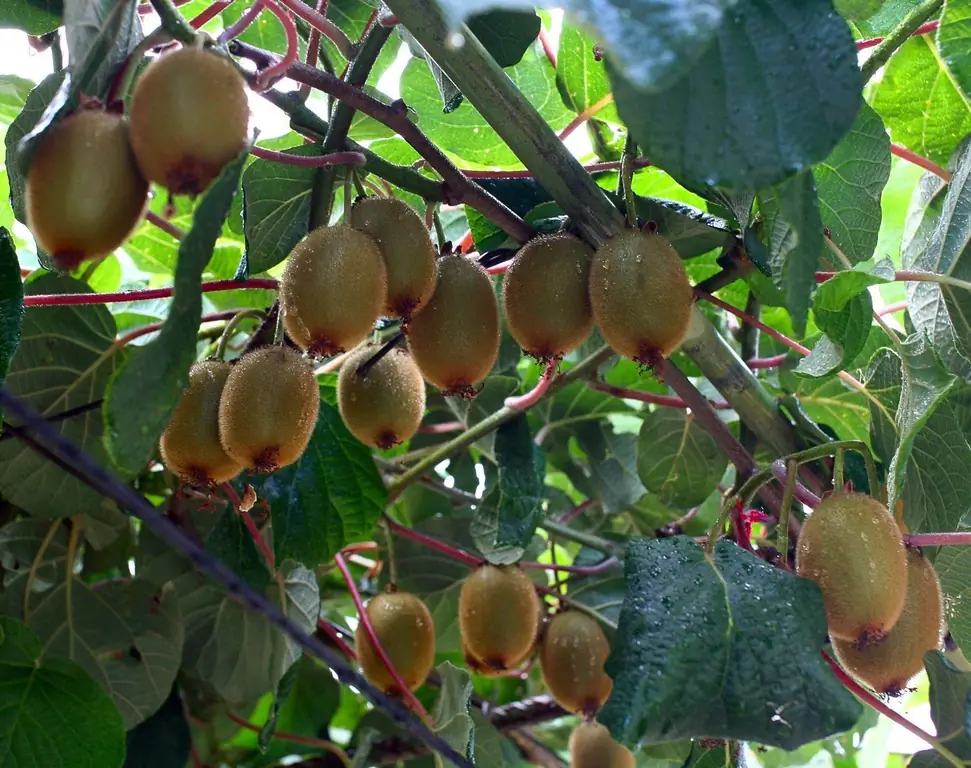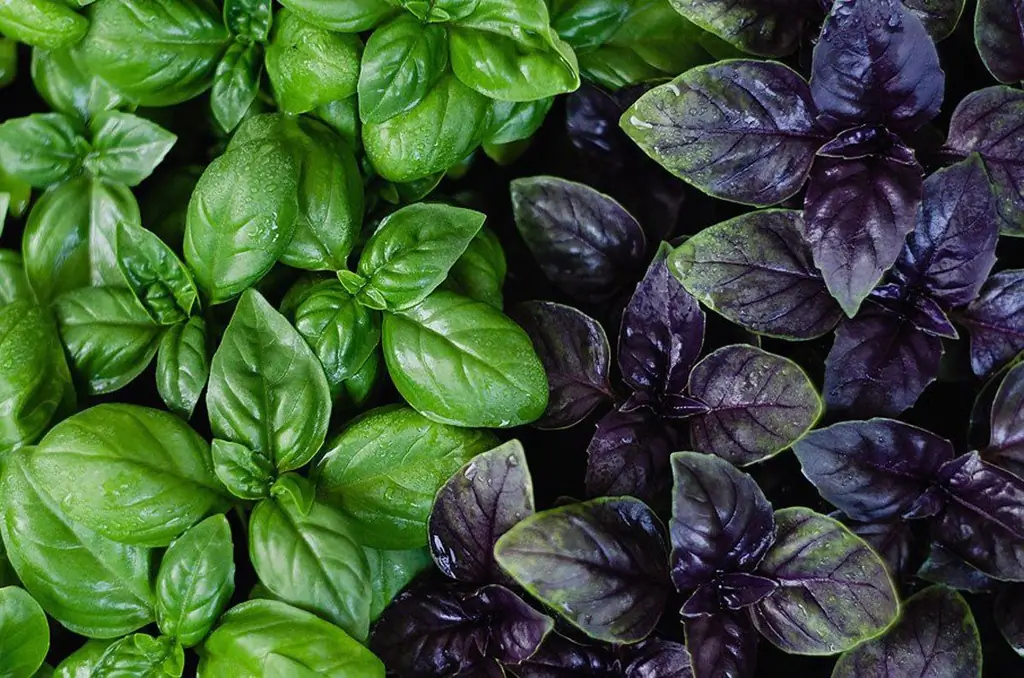
Table of contents:
- Author Bailey Albertson [email protected].
- Public 2023-12-17 12:53.
- Last modified 2025-01-23 12:41.
Useful recommendations for summer residents on growing blackberries

Blackberries are famous for their taste and benefits, so many summer residents want to grow them on their plots. This is a bit of a troublesome activity (after all, blackberries are originally a forest plant), but in fact there is nothing very complicated about it. The main thing is to follow the tips and tricks. Today we'll talk about the types of blackberries, caring for them and growing.
Content
-
1 Breeding methods
- 1.1 Seeds
- 1.2 Cuttings
- 2 Choosing a site and preparing the soil
- 3 Further cultivation and processing of plantings
- 4 Blackberries in your garden
- 5 A few words on how to form bushes
- 6 Video about growing blackberries in their summer cottage
Reproduction methods
There are several ways to breed blackberries:
- seeds;
- apical layers;
- green offspring;
- apical layers;
- lignified offspring;
- green cuttings;
- root cuttings;
- dividing the bushes.
The most common of these are propagation by seeds and cuttings. Such methods are most often used for upright blackberry varieties (also called kumanika). Let's consider them in detail.

Full-fledged seedlings can be easily grown from blackberry seeds
Seeds
Seed propagation of many varieties of blackberries allows you to preserve most of the economically valuable characteristics of the mother. Seedlings in most cases become even more stable than her.
- In order for the seeds to germinate well, carry out scarification or startification, and then soak them in rainwater for 2-3 days before sowing.
- Scarification (intentional partial damage to the seed shell) is a troublesome business, it will require special equipment from you.
- Startification is a more natural process, and although it is more time-consuming, it is easy to carry out at home. Mix seeds with river sand and peat in a ratio of 1: 3, pour into boxes, moisten and leave for 1.5-2 months at a temperature of 2-3 degrees. Water every 7-10 days.
- Seedlings are transplanted into open ground after 4 leaves appear. Maintain a distance of at least 10 cm between them, so as not to complicate further maintenance. Be sure to remove all weeds, periodically loosen the soil around the seedlings, and water if necessary.
- With the onset of cold weather, cover the seedlings with fallen leaves and branches for the winter.
- In the spring, the seedlings need to be dug up together with a clod of earth and transplanted to a permanent place.
After carrying out all these procedures, your blackberry grown from seeds will give the first harvest in 3-4 years.
Cuttings
Cuttings can be rooted and green. Each species has its own characteristics, which means the growing process is different.
When propagating blackberries by root cuttings, follow these recommendations.
- In autumn or early spring, you need to dig up the roots of the main bush and cut them into cuttings 5-7 cm long. Use 1 to 3 year old roots about 0.7 centimeters thick.
- If harvesting is carried out in the fall, the cuttings are placed in wet sand for the winter and stored in the basement. You can plant it immediately to a permanent place.
- For planting, cut furrows every 70-80 cm with a depth of 10-12 cm. Lay cuttings every 20 cm, cover with loose soil, water abundantly.
- In the air, seedlings must be carefully looked after, regularly watering, loosening the soil and removing weeds.

Propagation by cuttings is one of the most common methods
The propagation method by green cuttings is as follows.
- In early July, cut the cuttings from the upper third of the shoot, without the very last buds. The stalk consists of a bud. Leaf and stem parts.
- Treat the cuttings with 0.3% indolebutyric acid and immediately plant them in containers filled with prepared soil: a mixture of perlite and peat or vermiculite, sand in equal proportions.
- Water the cuttings and place in a greenhouse or greenhouse. Provide high humidity levels, up to 100%.
- The roots will appear on the cuttings in a month. Now they can be transplanted to a permanent place.
Further care consists in loosening the soil, watering during dry periods and removing weeds.
Choosing a site and preparing the soil
For growing blackberries, it is advisable to use flat areas, protected from dry or cold winds, but sufficiently ventilated. The soil should be fertile, moist and deeply drained.
- Sandy soil or light loam works well. The optimum soil acidity for blackberries is 6-6.2 pH.
- Carbonate soils are not suitable for this crop. Blackberries will lack the magnesium and iron needed for growth and fruiting.
- Clear the area under the blackberries from weeds, take measures to destroy pathogens and pests.
- Before plowing the soil before planting, apply rotted manure (1 bucket per 1 sq. M.), Superphosphate (150 g / sq. M.), Potassium sulfate (80 g / sq. M.). If the soil contains a large amount of humus, you do not need to apply manure. On such a site, blackberries will grow well, but bear little fruit.
- The plowing depth for planting should be 40-50 cm, level the plowing before planting.
Planting blackberries can be carried out:
- in the spring, before the buds begin to bloom;
- in the fall, before the onset of frost.
Make sure your seedlings have developed a root system and 1-2 stems with a bud on the roots.
To make further maintenance of the blackberry bushes easier, make the spacing between furrows at least 2 meters. The depth and width of the furrow is 30 cm.

Make sure the seedlings are strong enough before planting.
If you are planting blackberries in the fall, pre-add manure or compost to the soil. In the spring, it is enough to mulch the hole and the area around it. This must be done after the first watering, a week after planting.
Young. Cut the newly planted plants to a height of 22-24 cm.
Distances must be maintained between the blackberry bushes:
- 0.75-1.5 m for upright varieties;
- 2.5-2.9 m for creeping varieties;
- on supporting structures, the distance is halved;
- when grown in a bush method, the planting pattern is 1.8 X 1.8 m.
You can adjust this data depending on the varieties, placement and type of soil.
Further cultivation and processing of plantings
In the first year of growth, blackberries need to be watered regularly. In subsequent years, watering will be required in dry times, as well as during the fruiting period. It is not recommended to water the plantings with cold water.
Try to keep the soil in the aisles "fallow". To do this, cultivate at different depths, but not more than 12 cm. Up to 6 cultivations can be carried out in one season.
During the first 2 years after planting, before the blackberries grow, it is possible to grow vegetable crops in the aisles, except for tomatoes and other nightshades, the neighborhood with which is not desirable.
In October and November, plow the row-spacing to a depth of 17 centimeters. At the same time, apply humus, phosphorus and potash fertilizers every 3-4 years.
In rows where most of the roots are located, weed and remove excess root suckers. Loosen the soil to a depth of 8 centimeters, while using a pitchfork to avoid damaging the rhizomes.
Before the offspring begin to appear, mulch the areas where the bulk of the roots are distributed with organic materials.

Proper care will ensure you have a good blackberry harvest
Use herbicides to suppress weeds. Simazine works well, use it according to the manufacturer's instructions.
For a consistently high yield, fertilize each year. In autumn, under the digging of soil near the bushes, for each square meter, add 4-5 kg of manure mixed with 30 grams of superphosphate and 40 grams of potassium sulfate, and in the spring - 30 grams of urea or ammonium nitrate. There is no need to fertilize the blackberries after harvest.
Blackberries in your garden






A few words about how to form bushes
The correct formation of bushes is a very important step in caring for a blackberry. This plant, especially in its creeping form, is very laborious in processing and harvesting. Therefore, you can place blackberry bushes on a vertical trellis, this will greatly facilitate maintenance.
For the installation of the trellis, install the posts 1.8 meters high at a distance of 6-10 meters from each other. Stretch the wire: the first row at a height of 1 meter, the second - 1.2 m, the third - 1.5 m, the fourth - 1.8 m. You can limit yourself to two or three rows.

Thanks to the trellis, caring for blackberries will become simple and easy.
There are 3 ways to form a bush on a trellis.
- Interlace the shoots between 1-3 rows of wire. Spread the shoots that appeared after shaping to the left and right of the main bush, bring the top branch onto a wire of 4 rows.
- Spread the blackberry shoots in the shape of a fan, fasten to the wire. Bring the healthiest and youngest shoots to the topmost wire. The bush will be better lit, which promotes free growth of branches.
- Spread the fruit shoots in different directions from the young shoots, tie them to a wire at a height of one and one and a half meters.
Use twine, braid, or soft cloth to tie. With the garter, trim the shoots about 10 cm to improve yield.
Pruning is done several times throughout the year. In autumn, completely remove diseased, fertile shoots and excess young shoots. In the spring, you need to cut out the frozen shoots. You will notice them right after the buds appear on the branches.
Video about growing blackberries in their summer cottage
We hope our tips and tricks will help you grow good, strong blackberry bushes that will decorate your site and give you a rich harvest of healthy and tasty berries! If you have any questions, ask them in the comments, as well as share your experience in growing this crop. Good luck!
Recommended:
Growing Fennel From Seeds (including Vegetable Seeds) At Home And In The Garden + Photo And Video

Practical tips for growing fennel from seed. Fennel species, varieties suitable for growing in the middle lane
How To Grow Kiwi (at Home From Seeds, Seeds, Etc.) + Video And Photos

Step by step instructions for growing kiwi at home. Growing from seeds and seeds, taking care of seedlings and plants during the growth period
How To Grow Corn In The Country From Seeds Or Through Seedlings: When To Plant, How To Care And Other Features

Corn, features of its cultivation by seeds and seedlings, instructions for planting and care. List of popular varieties. Features for different regions. Video
The Interior Of The Kitchen And Living Room In A Loft Style In An Apartment And A Country House: Examples Of Design Design, Choice Of Color And Material, Decoration, Photo

The main features of the loft style and how to decorate the kitchen in such a design. The choice of materials, colors and textures for finishing. Loft-style lighting and decor for the kitchen
Basil Cultivation And Care, Including In Ukraine, The Moscow Region And In Other Regions, As Well As A Description Of Varieties With Characteristics And Reviews

What is basil? How to plant and care for basil: reproduction, watering, feeding. Diseases and pests of basil: signs and methods of control
